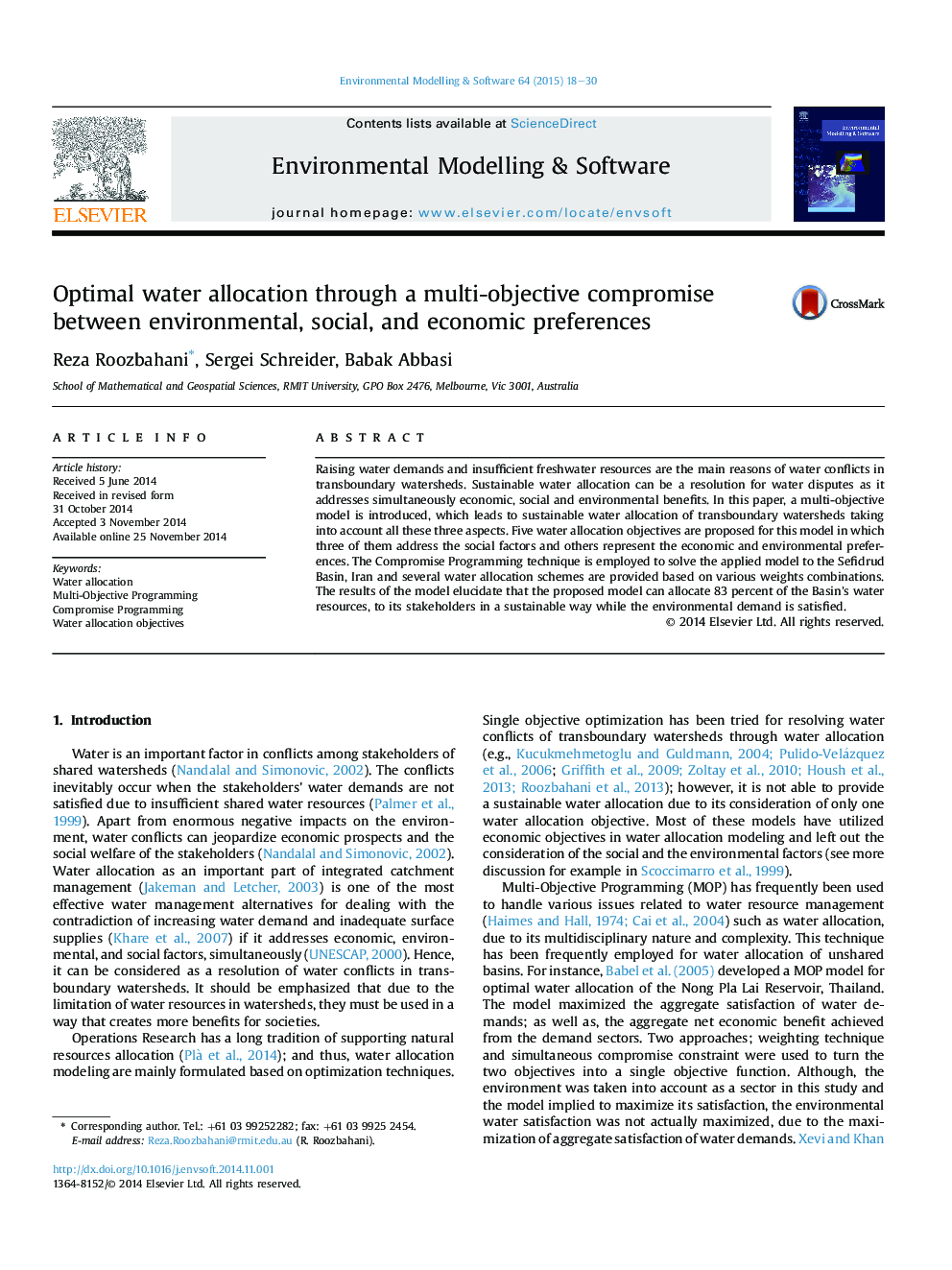| Article ID | Journal | Published Year | Pages | File Type |
|---|---|---|---|---|
| 570179 | Environmental Modelling & Software | 2015 | 13 Pages |
•Sustainable water allocation requires the triple bottom line approach.•Proposed multi-objective model covers economic, social, and environmental aspects.•Our model focuses on water allocation of shared basins with competing stakeholders.•We analysed the sensitivity of stakeholders to the objectives' weights.•We applied the model to a real cases study to demonstrate its applicability.
Raising water demands and insufficient freshwater resources are the main reasons of water conflicts in transboundary watersheds. Sustainable water allocation can be a resolution for water disputes as it addresses simultaneously economic, social and environmental benefits. In this paper, a multi-objective model is introduced, which leads to sustainable water allocation of transboundary watersheds taking into account all these three aspects. Five water allocation objectives are proposed for this model in which three of them address the social factors and others represent the economic and environmental preferences. The Compromise Programming technique is employed to solve the applied model to the Sefidrud Basin, Iran and several water allocation schemes are provided based on various weights combinations. The results of the model elucidate that the proposed model can allocate 83 percent of the Basin's water resources, to its stakeholders in a sustainable way while the environmental demand is satisfied.
